
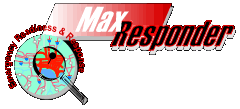
A MapObjects application, MaxResponder is enabling law enforcement professionals to view complex crime data and statistics on their laptops and mobile computers as they respond to an incident. A variety of .shp crime files can be integrated with municipal data (street, parcel, imagery, building footprint, floor plans, etc.) to provide a responder with a comprehensive view of the geospatial, tactical, and crime events of a home or a neighborhood in an easy to use browser.
 |
 |
Crime mapping as a tool for law enforcement has emerged from the development of GIS technology and the increase number of police departments utilizing computer-aided-dispatch (CAD) systems. GIS provides the computer mapping technology to visualize the crime data generated by CAD.

As a result, new demands have arisen to drive technology. Police departments must now decide how to centralize the vast amounts of records, files, photos, plans, and maps produced by these systems and how to use the data to support their efforts in the field.
As a result, new demands have arisen to drive technology. Police departments must now decide how to centralize the vast amounts of records, files, photos, plans, and maps produced by these systems and how to use the data to support their efforts in the field.
Today we have made great strides in making data available over networks. Bandwidth at the desktop is tremendous. Wireless data systems bring records, data and reports directly to the officer on patrol. However, certain realities still place constraints on technology. Data is contained in disparate stovepipes and not always accessible. Patrol and tactical operations do not occur near high bandwidth portals. Wireless bandwidth is still limited. In addition, some classes of data are memory intensive and difficult to move over existing wireless systems or the wireless web.
Law Enforcement organizations need to pre-position large format data in the field to secure the essential data to respond immediately to calls for service and for complete investigative records and statistics to facilitate law enforcement operations.
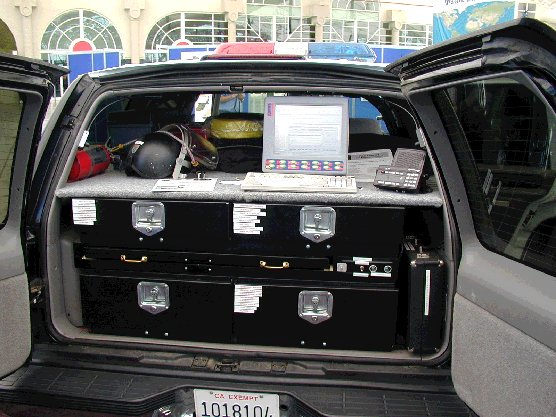
Situational awareness data must be easy to assimilate for those on patrol. Tactical operations in the field need access to site, planning and related data. This data should be acquired prior to an incident, not during or after. MaxResponder was designed to display geospatial and analytical data such as aerial imagery, floor plans, tactical plans, crime maps and other data for time critical incidents relating to schools, government and the community.
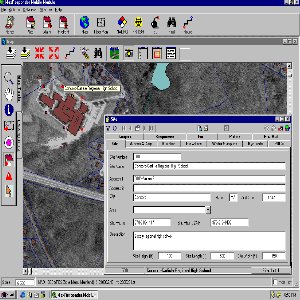
MaxResponder can also serve as a database for historical analysis and visualization of case-related data, resource allocation and crime pattern analysis. MaxResponder offers an in-vehicle solution to effectively manage and document an incident as it unfolds delivering critical data and geo-references to law enforcement officers in the field. MaxResponder also has the flexibility to integrate with CAD E/911 Dispatch Systems, Record Management Systems (RMS), PDAs, CDPD/800Mhz wireless communication systems, GPS/AVL, and natural hazard and threat models.
MaxResponder is made up of layers of geospatial information. Some data layers to consider are streets and roads, parcel, infrastructure, building footprints, floor plans, crime maps, hazard maps, utilities, imagery and topography.
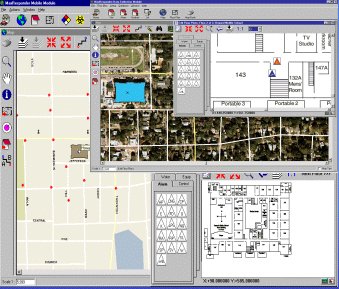
There are three types of data objects that can be stored in layers: points, lines and polygons. Examples of each type of object include neighborhood boundaries (polygon), utility lines (line) and hydrants (point). In addition, each object has attributes, which are usually stored in related tables, although they can also be a part of the layer. It is important to understand that geography plays an important part in law enforcement by displaying the spatial distribution and patterns of crime and allowing for the analysis and correlation of the incident and place to predict and prevent crimes.
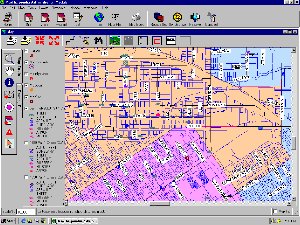
Crime maps determine "hotspots," a common reference to areas in which there is a high volume of crime. These density maps present the "big picture" and allow investigators to interpret a large number of crimes without researching individual incidents and leads to effective prioritization and deployment of personnel.
Characteristics of an area, such as land use and population can also affect the spatial distribution of crime. Where once crimes were tracked and analyzed by placing pins on a paper map, GIS software allows the production of more sophisticated maps by combining their databases of reported crime locations with digitized maps.
For investigators, GIS displays criminal intelligence and crime analysis information with incident data such as suspect name, time and type of crime, location by street, landmark, or building to visually interpret, analyze and report the data. Presenting crime data geographically provides a robust decision making tool for investigators since it can establish relationships, trends and patterns that would otherwise be buried in the data.
It is clear that utilizing GIS technology in crime analysis increases the effectiveness of police services to communities. Based on GIS data, police departments can allocate resources to where crime is actually happening, which for any community who has purchased GIS technology, is an excellent return on investment. Additionally, the use of GIS technology can be used in community relations with Neighborhood Watch groups and others to demonstrate police effectiveness by using maps to show the actual location and strategies to curb crime. GIS can be a valuable aid in maintaining cooperation between the community and the police.